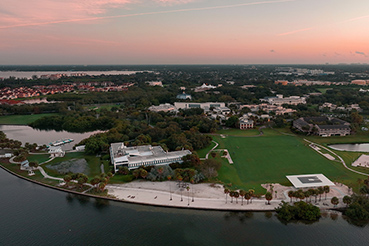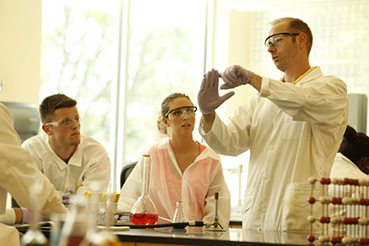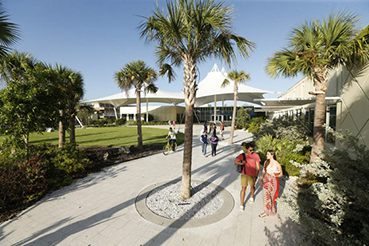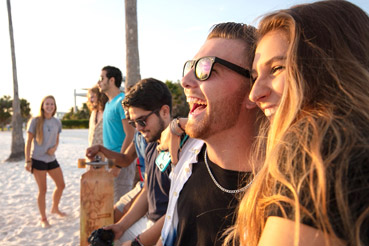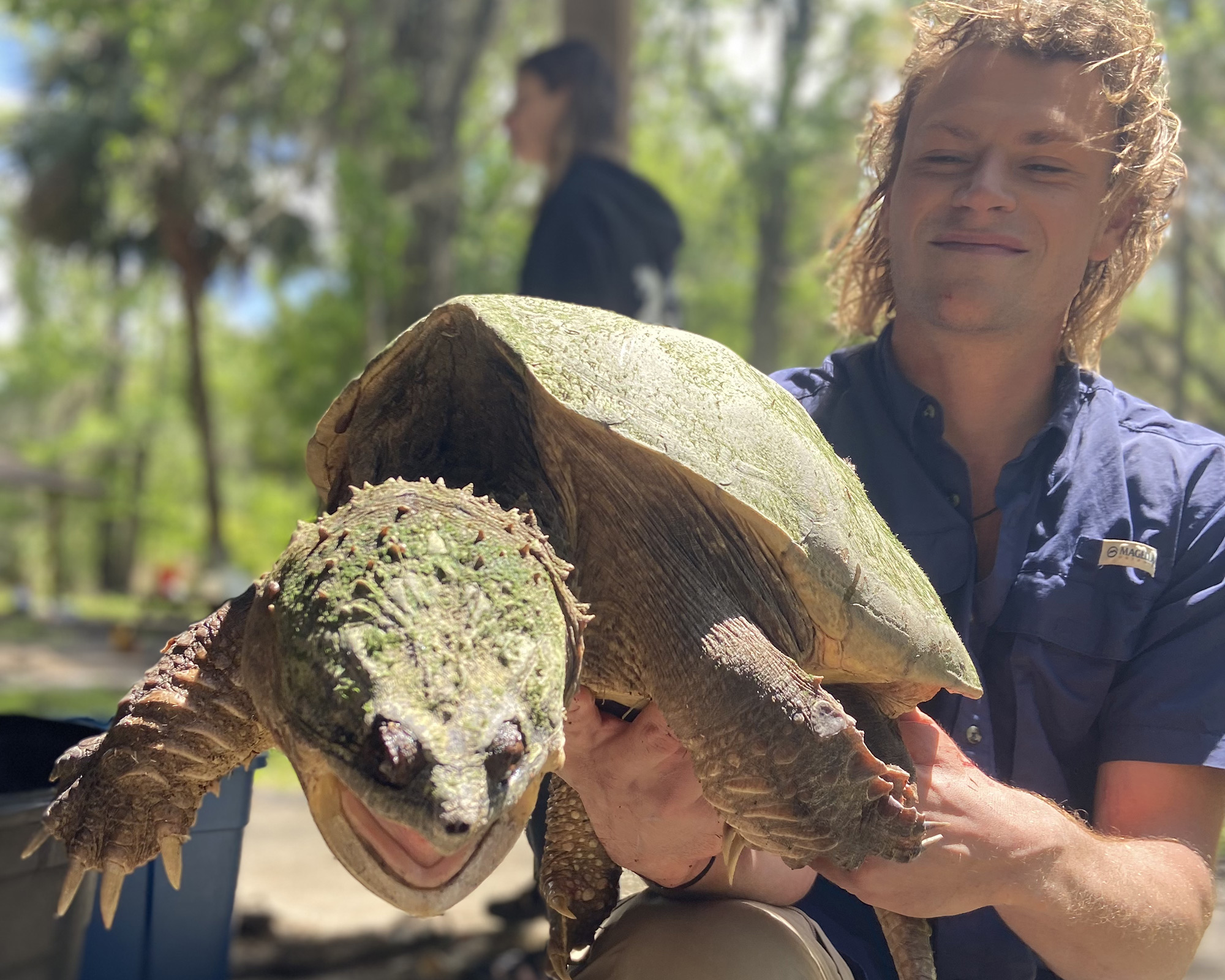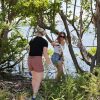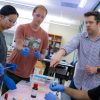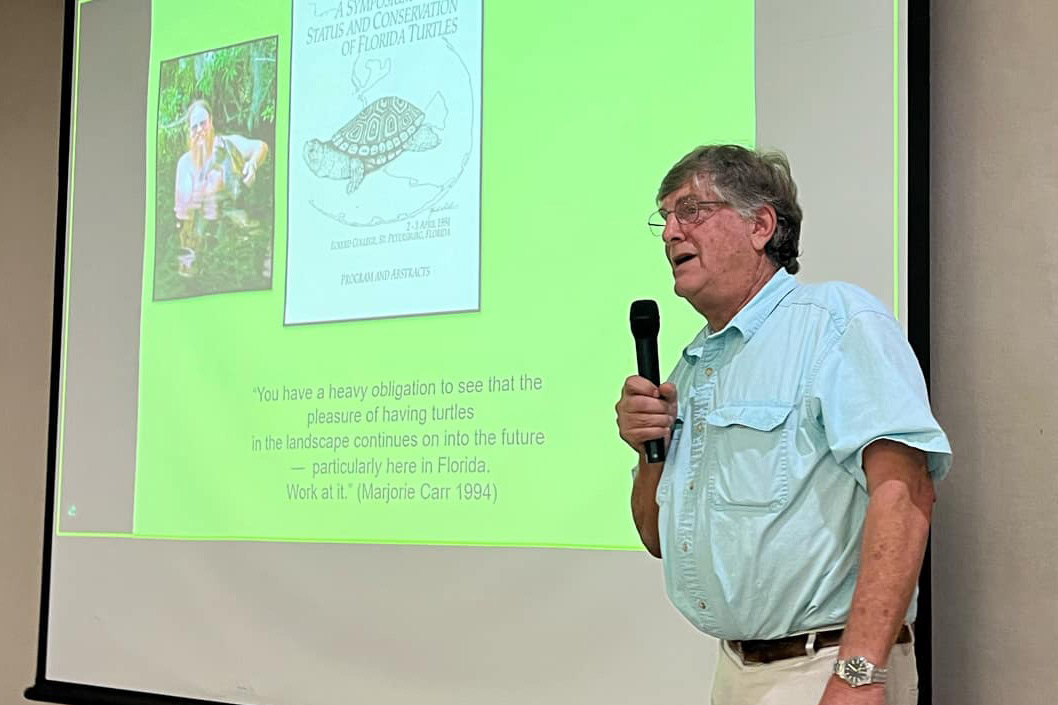
Professor Emeritus of Biology Peter Meylan addresses Gopher Tortoise Council members at their conference on campus. Photo courtesy Jeff Goessling
Well over 100 researchers, educators, state and federal biologists, conservationists, and students packed a conference room at the Eckerd College Continuing Education Center Nov. 15 and 16 to learn more about a reptile that carries its home on its back, is valued by people across the southeastern U.S. and is becoming increasingly threatened.
The 46th meeting of the Gopher Tortoise Council kicked off with an address from Peter Meylan, Ph.D., professor emeritus of biology at Eckerd. An author and researcher who had taught at Eckerd from 1989 to 2018, Meylan studied turtles in Florida springs ever since starting a project in the Rainbow River in Marion County in 1990. Since then, thousands of Eckerd students have taken part in the project, which is ongoing.
Meylan was introduced at the Council meeting by Jeff Goessling, Ph.D., associate professor of biology at Eckerd who joined the Rainbow River project when Meylan retired from teaching and is the faculty sponsor of Eckerd’s Herpetological Society. Goessling also is the Florida representative to the Council, a nonprofit founded in 1978 by a group of southeastern biologists and others concerned about the decline of the gopher tortoise.
“It’s amazing to see this many people here,” Meylan said with a wide grin. “When we first started, there were four of us.”
If the turtle species had a best friend, it would be Peter Meylan, who recently received the Florida Chapter of The Wildlife Society’s Paul Moler Herpetological Conservation Award. He grew up near the Passaic River in New Jersey catching and keeping turtles. He then earned three degrees at the University of Florida and is noted for, among other accomplishments, editing Biology and Conservation of Florida Turtles, a 2006 comprehensive summary of all 25 freshwater turtle, marine turtle and tortoise species that live in Florida.
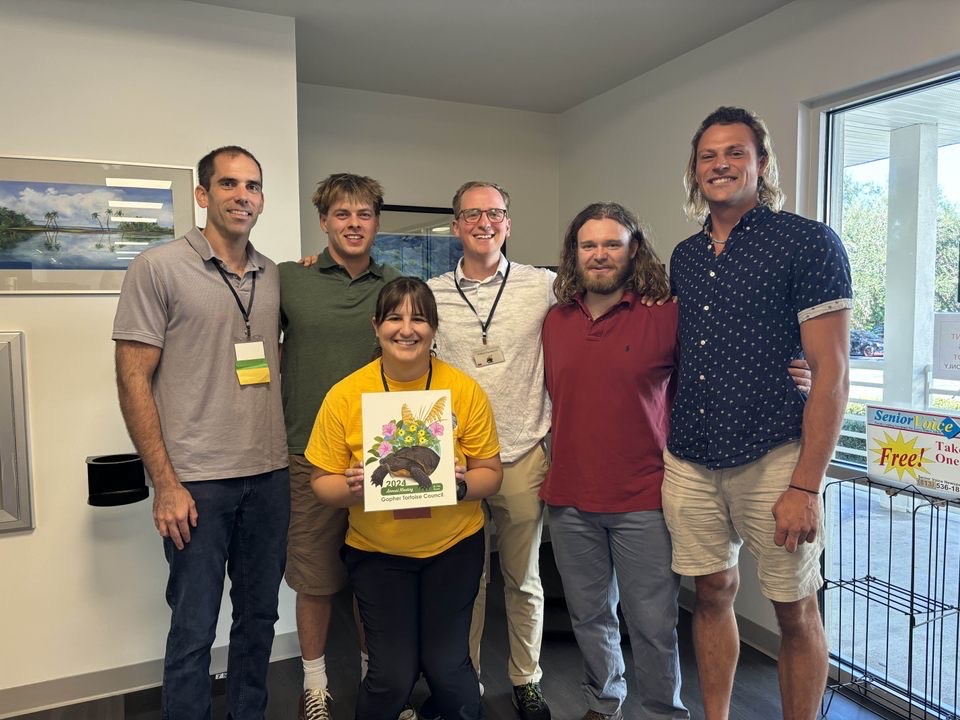
Current biology students and recent biology graduates, including Peter Crawford ’20 (far right), joined Associate Professor of Biology Jeff Goessling (far left) at the conference.
“Florida is one of two centers of turtle diversity in the world,” Meylan told the audience. “The other is Bangladesh. Half of the families of turtles are found in Florida, so we are very fortunate.
“But the turtles need our protection,” he added. “They’re crushed on roads, caught in crab traps, losing their habitat, and being affected more and more by climate change.”
Turtles are far more than slow-moving reptiles, Meylan explained, and the gopher tortoise is a prime example. Found exclusively in the southeastern U.S. and listed as a threatened species in Florida, the gopher tortoise is important not only because of what it is but because of where it lives. The tortoise is designated as a keystone species because its burrows provide shelter for at least 350 additional species—including other gopher tortoises.
“When we did density estimates at Egmont Key,” Meylan said, “students would reach into a burrow and pull out two, three or four gopher tortoises from the same burrow. Oh, and there are no rattlesnakes on Egmont Key,” he added, “so it was safe to reach down.”
Among the other obstacles turtles face are predators—especially the human variety. “There are a lot of people in Florida who think we should eat and harvest turtles,” Meylan said. “People are looking for the bigger ones. But in some species, the females are bigger than the males, so they’re taking the reproductive females out of the population.”
Among the ways to help the turtles, Meylan suggested, are increased protections for both uplands and wetlands, as well as passageways under roads and highways that would allow turtles and other animals to safely cross.
“So I’m passing the torch on to you,” he told the group. “You’re doing great work. Keep it up. And we need to get young people involved. Because it’s only going to get worse.”

